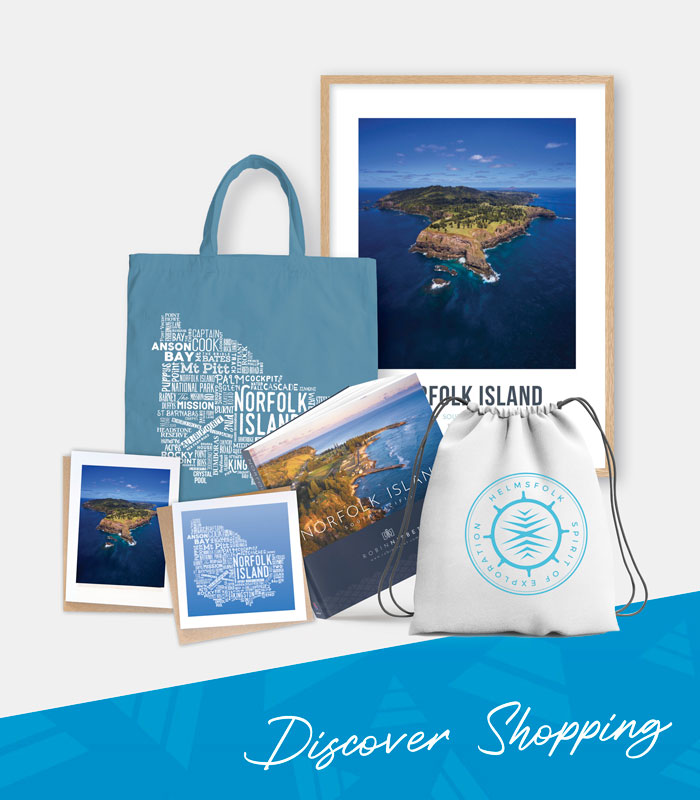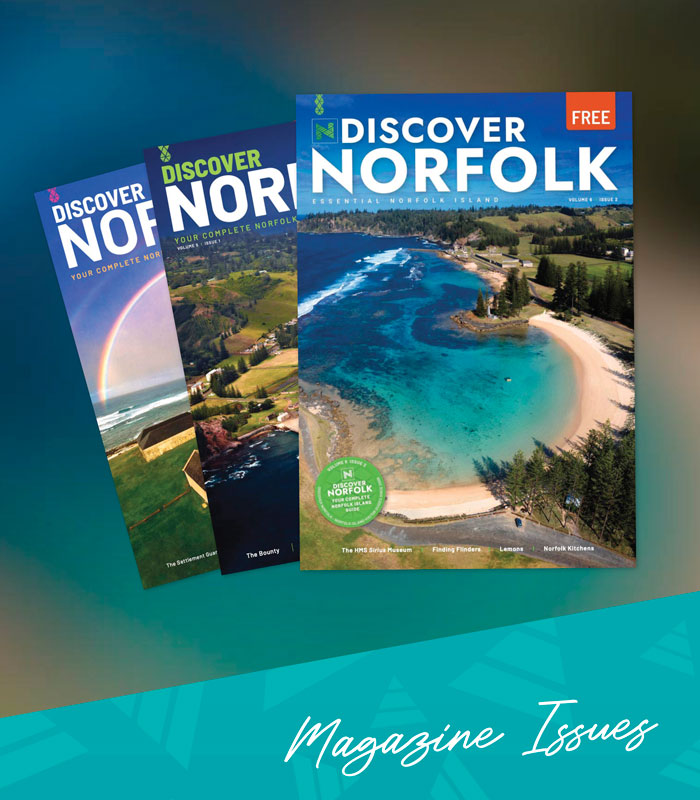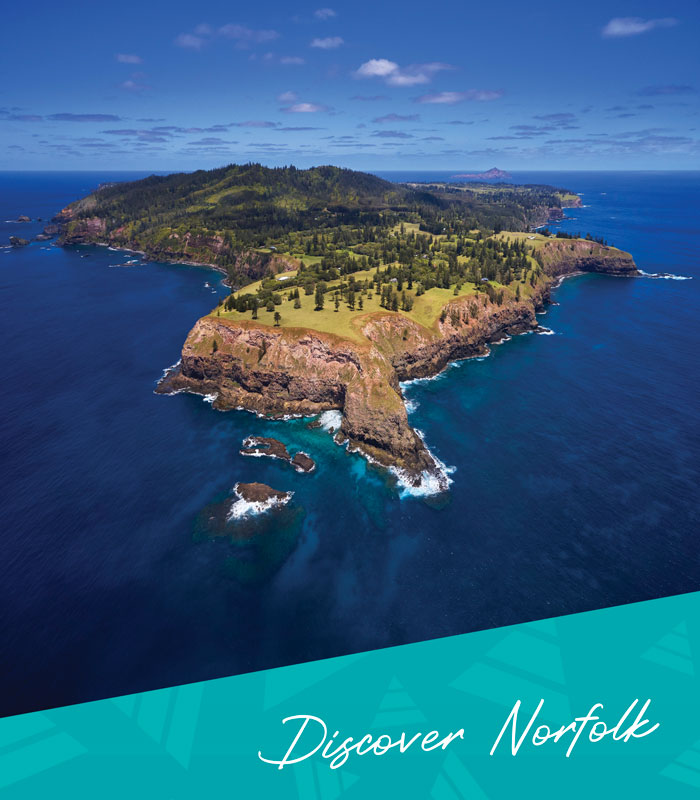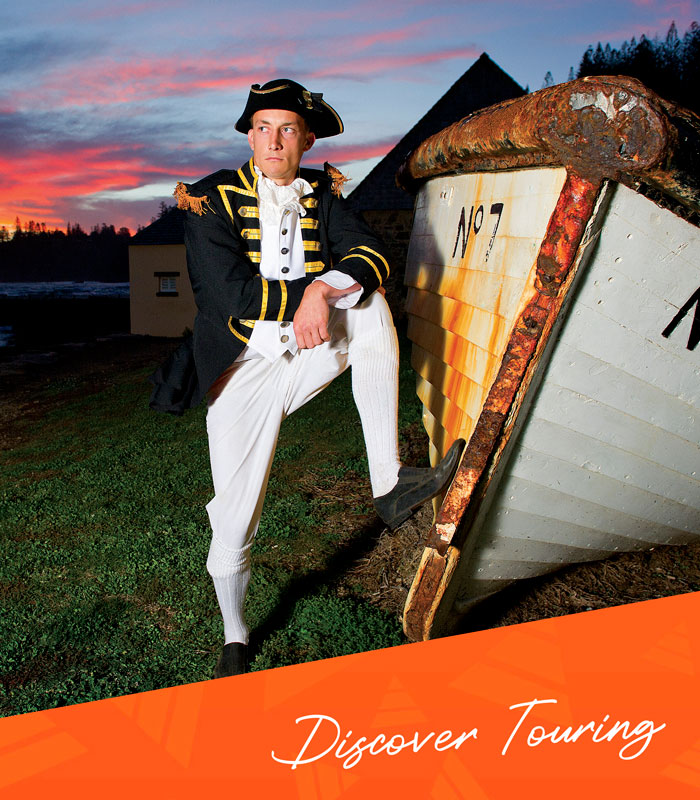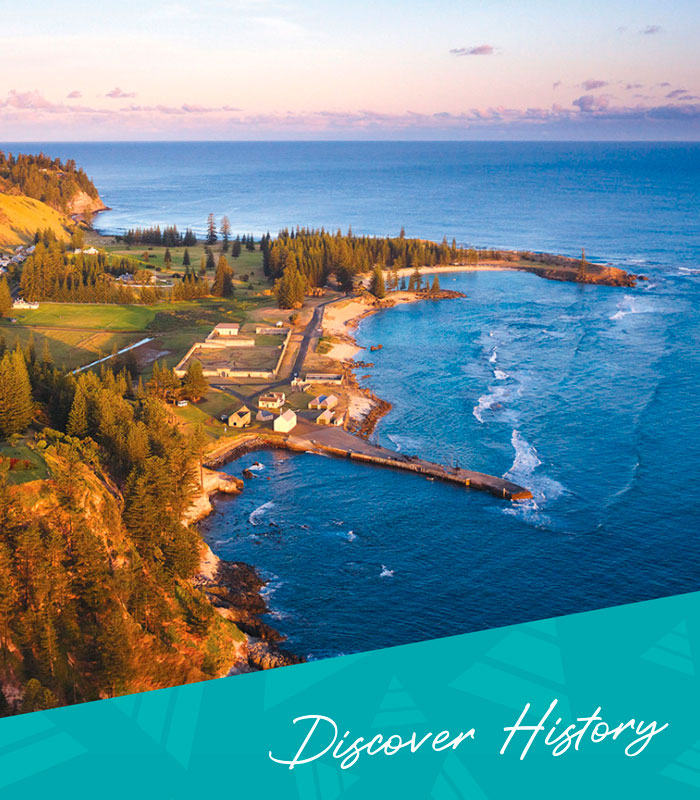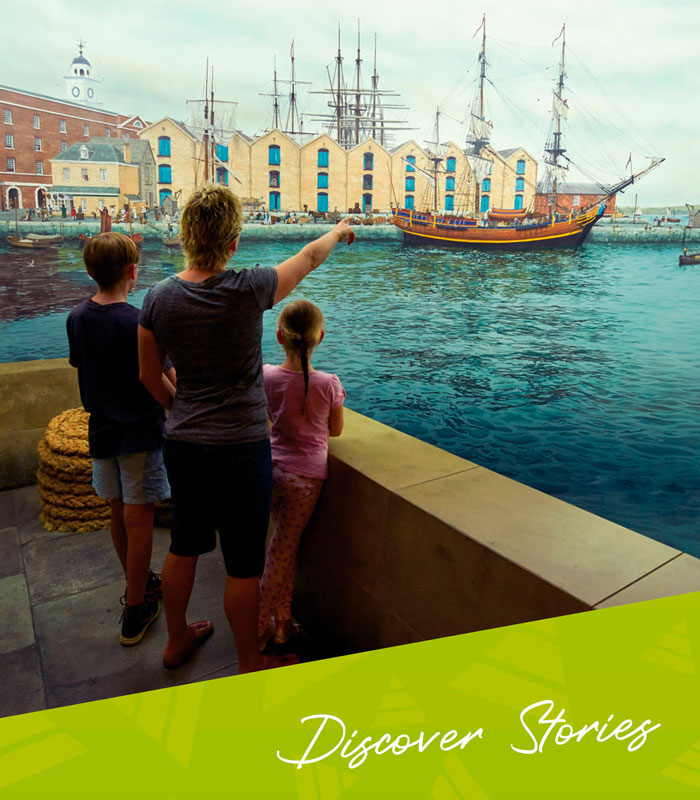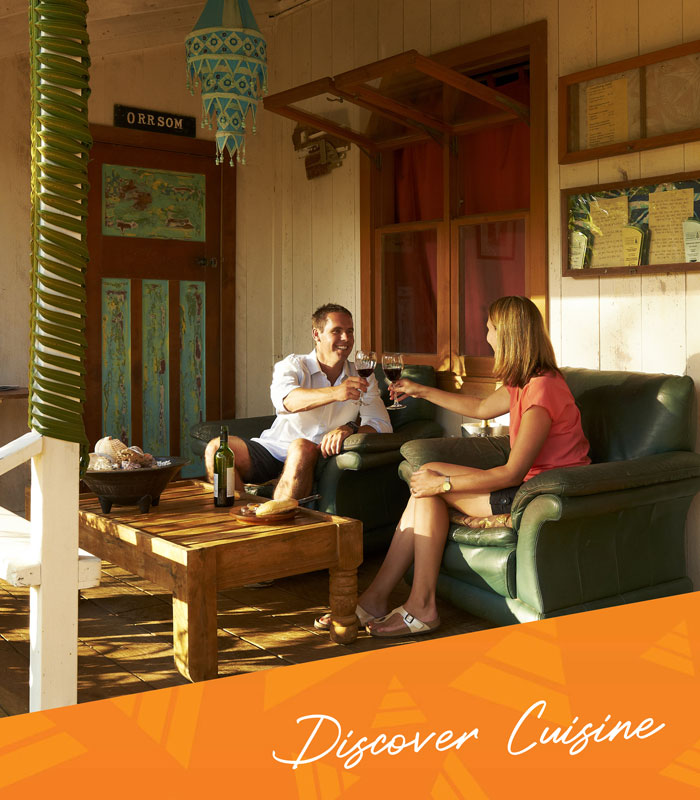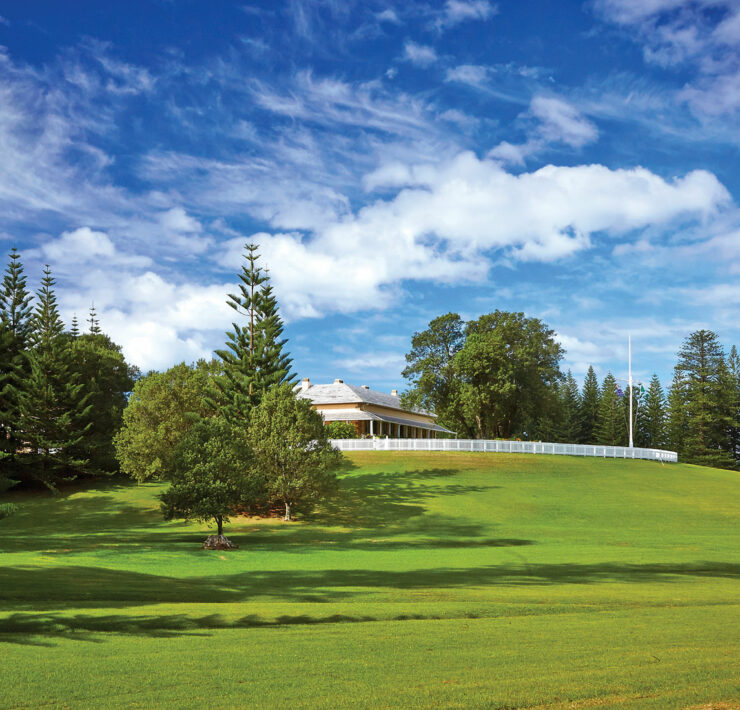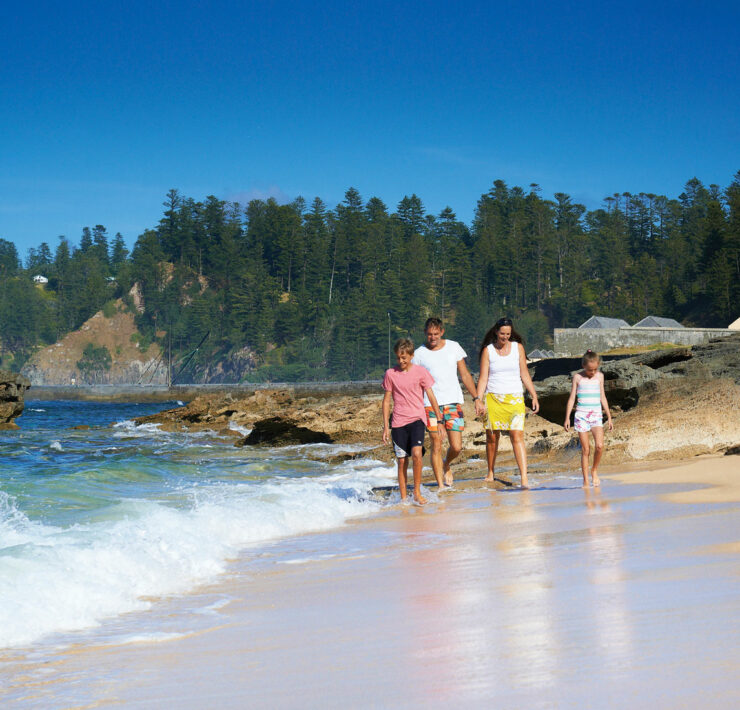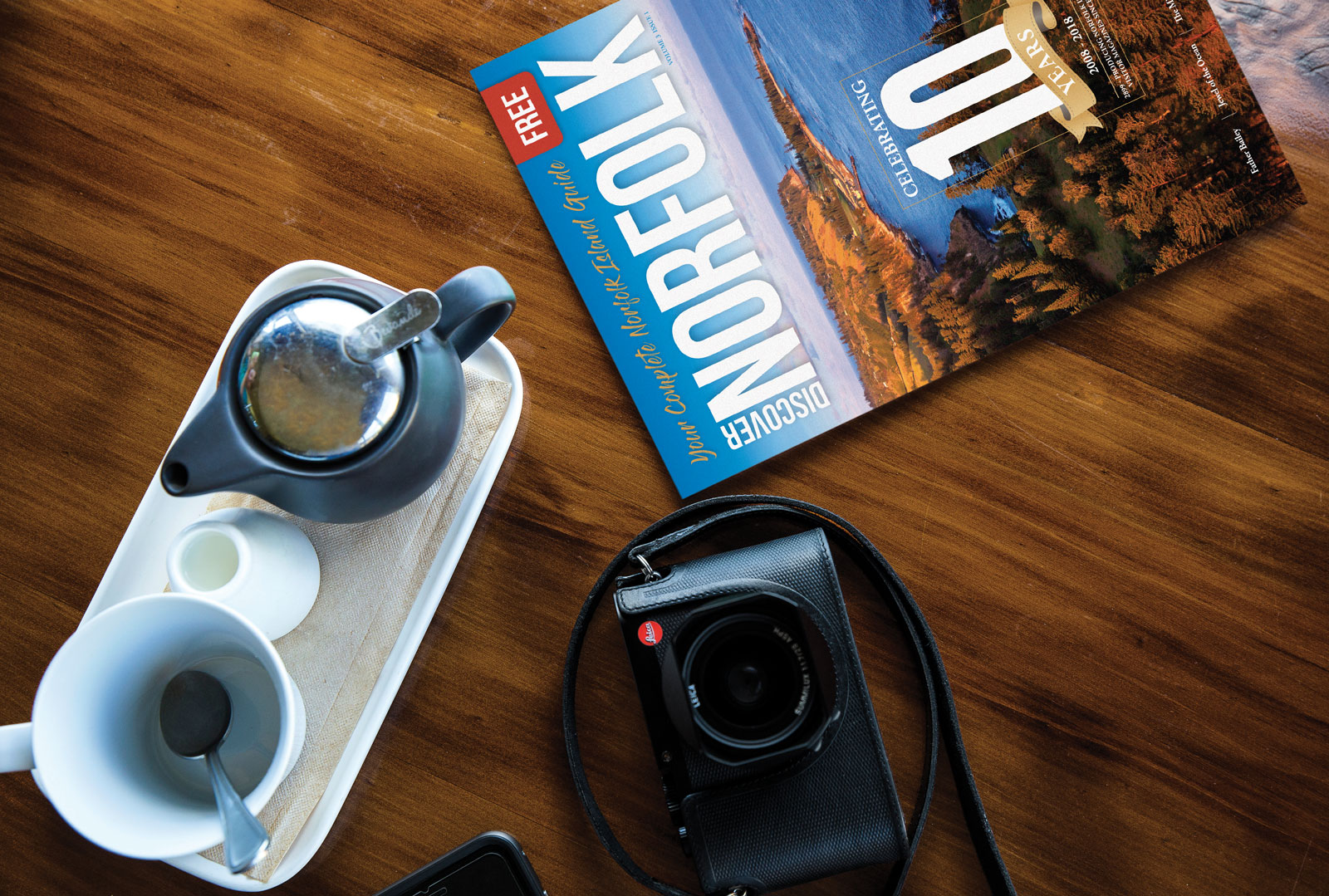Home » All Articles » The Mission: Creative crafts during the Melanesian Mission
The Mission: Creative crafts during the Melanesian Mission

With more than 14,000 artefacts, the Norfolk Island Museums exhibit items from all four periods of Norfolk history – Polynesian, First British Settlement, Second British Settlement and the Pitcairn Settlement. Some of the more beautiful artefacts are those that represent the traditions and cultures from around the Pacific, brought to Norfolk Island by students of the Melanesian Mission. These include wooden items, such as combs carved and in-laid with shell to create striking ornamentation.
In the early 1800s, Christian missionaries from all over Europe travelled to Oceania to bring the local indigenous peoples into the religious fold. They would also train converts to become missionaries themselves.
Anglican missionaries travelled throughout the Pacific, and would bring youths interested in mission work back to New Zealand to be trained. This was not overly successful and in 1866 Bishop John Coleridge Patteson gained permission to build a training centre on Norfolk Island, naming it the Melanesian Mission in recognition of its students’ origins. It officially opened in 1867.
The Mission started with 16 students but gradually grew over the decades, and by 1899 there were about 200 students from 20 islands around the Pacific. Students not only received religious education, but were also taught farming and carpentry techniques (boys), or cooking and sewing (girls). Attending the Mission was seen as an opportunity for the students, who took their new-found skills (and religious doctrine) back to their island communities.
At its height, the Melanesian Mission covered approximately 400 hectares; however, when the Mission moved to the Solomon Islands in the 1920s many buildings were dismantled, and land sold off. The St Barnabas Chapel and Bishops Court are the only remaining buildings from the Mission days, with the Church of England retaining approximately 40 hectares of the original lands.
The Mission students brought with them traditional crafts such as weaving, carving and intricate ornamentation using shells, feathers and other natural fibres. One of the prevalent crafts brought to Norfolk Island from the Pacific, particularly the Solomon Islands, was the technique of decorating wooden items such as combs with shell inlays. The Norfolk Island Museum Trust collection has a number of these items, which are on display at the Pier Store and Royal Engineers Office. St. Barnabas Chapel remains a place of worship today and is open for both services and visitors. There you can find a large selection of timber work individually decorated with unique shell inlay designs.
Wood inlaid with shell has been a decorative tool for at least 400 years in the Solomon Islands; however, different techniques were introduced from each country of origin. In his journal, Reverend P. Stacy Waddy recounted meeting Kaura – whom he appeared to have known previously when he lived in the Solomon Islands – during his visit to the Melanesian Mission. Kaura made combs in his spare time:
“Kaura brings home his fish, and about four o’clock he has his solid meal of the day; after which he lazes and loafs, or [11/12] practises with bow and arrows, or makes himself a new comb of inlaid work, or a sharp, slender nose-ornament shaped, like a bird, which he thrusts straight into the tip of his nose, half an inch deep, so that it sticks out like the prow of a canoe!”
– (Waddy, 1906)
Kaura travelled to the Melanesian Mission in c1906, bringing with him this traditional knowledge. His story is similar to many other students. Techniques were typically handed down through families via master carvers with established reputations, and this continues to this day. Even today in the Solomon Islands, carvers build up their reputations by accepting commissions; the more commissions they are engaged for, the more their advice is sought after by other carvers, who often copy their work. The top master carver is known as the ‘Namba Wan’ carver, and it is a great honour to attain this rank.
Craftsmen traditionally made items out of wood such as ebony and kerosene wood (a dark-veined timber similar to walnut), and used mother of pearl, tortoise shell (from the nautilus shell), cowrie and cone-shells for the inlay design. The cone shells were ground flat for use. The shells were scored with a knife and gently broken into strips, which were then shaped using a file or coarse stone. Sometimes other sharp shells were also used for the carving.
Natural gums, such as wild honey, or a putty made from fruit pulp were used as an adhesive to secure the shell in place. The wood was traditionally carved with stone tools, but when metal carving implements became available craftsmen made use of them. The teeth of the comb are separate pieces of wood bound tightly or glued together by a kind of resin.
Items on which this technique was used include buildings, statues and figurines, bowls and plates, and ceremonial items such as dancing sticks, shields and ceremonial batons (wari hau), and canoe prow figures. Combs, such as those on display at the Norfolk Island Museums, were used by normal people in everyday life, worn in their hair as ornamentation. Melanesian men were more likely to wear hair combs as part of their ceremonial dress than women, mainly as dance ornaments. Combs could also be worn to signal a wearer’s social status on a special occasion. Many at the Melanesian Mission made these combs as souvenirs for fundraising activities, but they were often treasured family items or made to be given as gifts.
The practice was used not only in personal ornamentation, but also in buildings, such as that evidenced in St Barnabas Chapel. St Barnabas was known as the “mother church of the Church of England’s missionary work in Melanesia”. The chapel was built from stone taken from the ruins of the New Gaol at Kingston and was dedicated to the memory of Bishop Patteson, former Bishop of Melanesia, in 1880. The beams in the ceiling were constructed by ship builders and represent the hull of a ship.
“And even the visitor who knows old England and the Continent will find here something admirable. European art enriched with South Sea Island inlaying–tortoise-shell, cowrie, and mother-of-pearl.”
– (Waddy, 1906)
These artefacts represent the tie between traditional artistic and cultural practices and the colonial push to ‘Westernise’ non-Europeans through religious and domestic education. They teach us more about the experiences and wider knowledge held by students of the Melanesian Mission prior to their arrival on Norfolk Island, and are an enduring reminder of the Island’s multi-faceted history.
____
Image Credit: Robin Nisbet
www.robinnisbet.com
____
Article content disclaimer: Article first published in Discover Norfolk, Volume 03 Issue 01, 2019. Please note that details of specific travel, accommodation and touring options may be outdated. References to people, places and businesses, including operating days and times may be have changed. References to Government structure and Government businesses/entities may no longer be applicable. Please check directly with businesses and/or Government websites directly rather than relying on any information contained in this article before you make travel arrangements.


